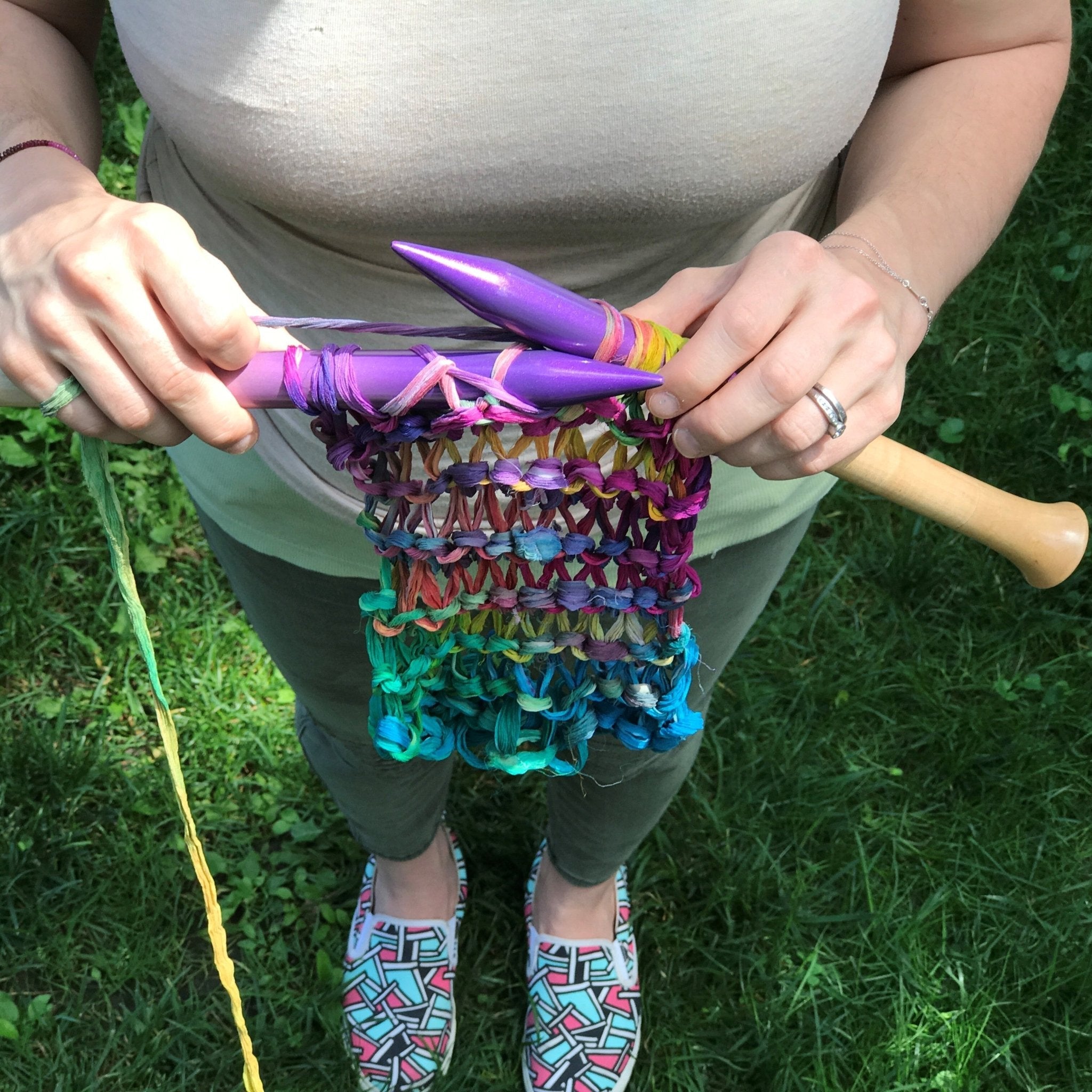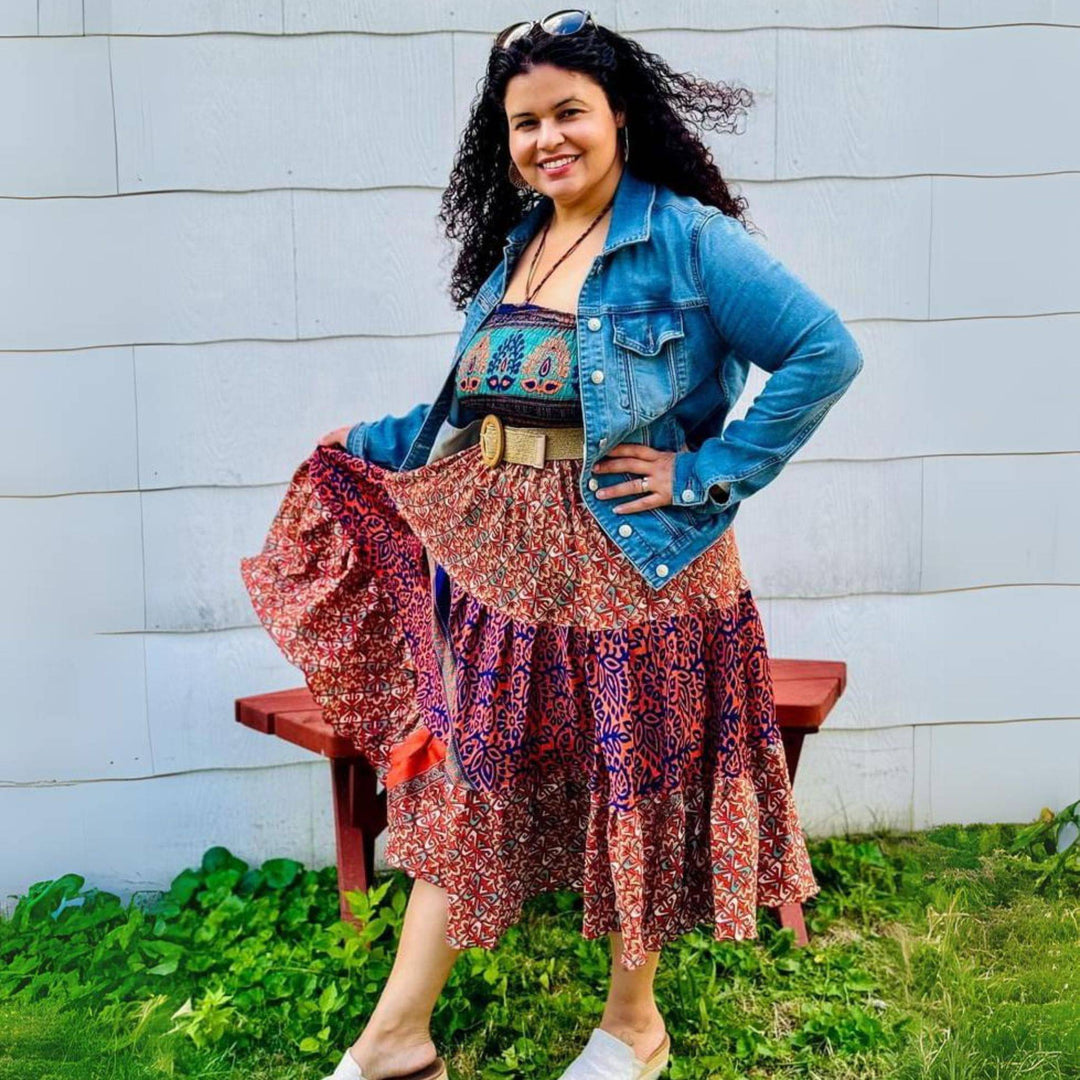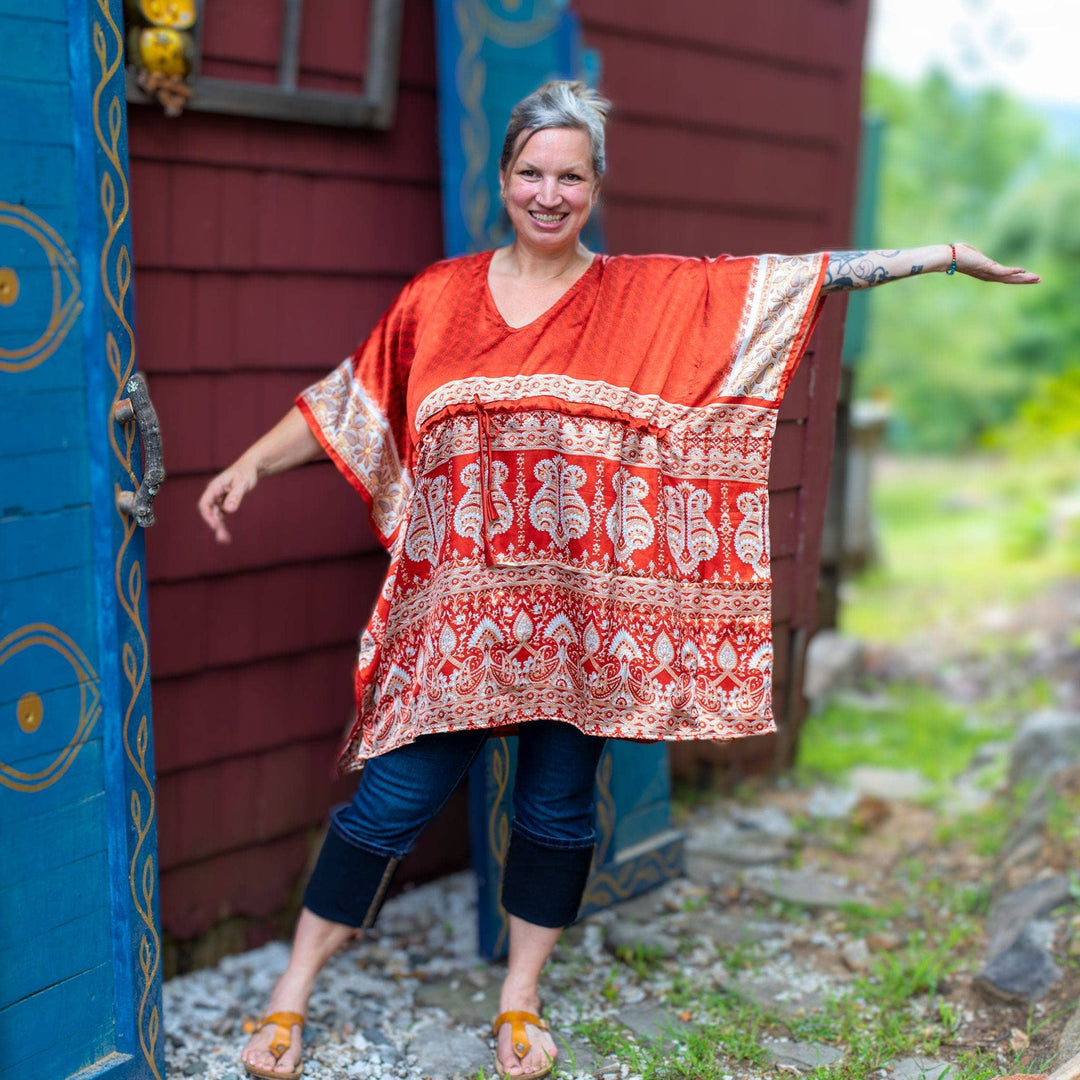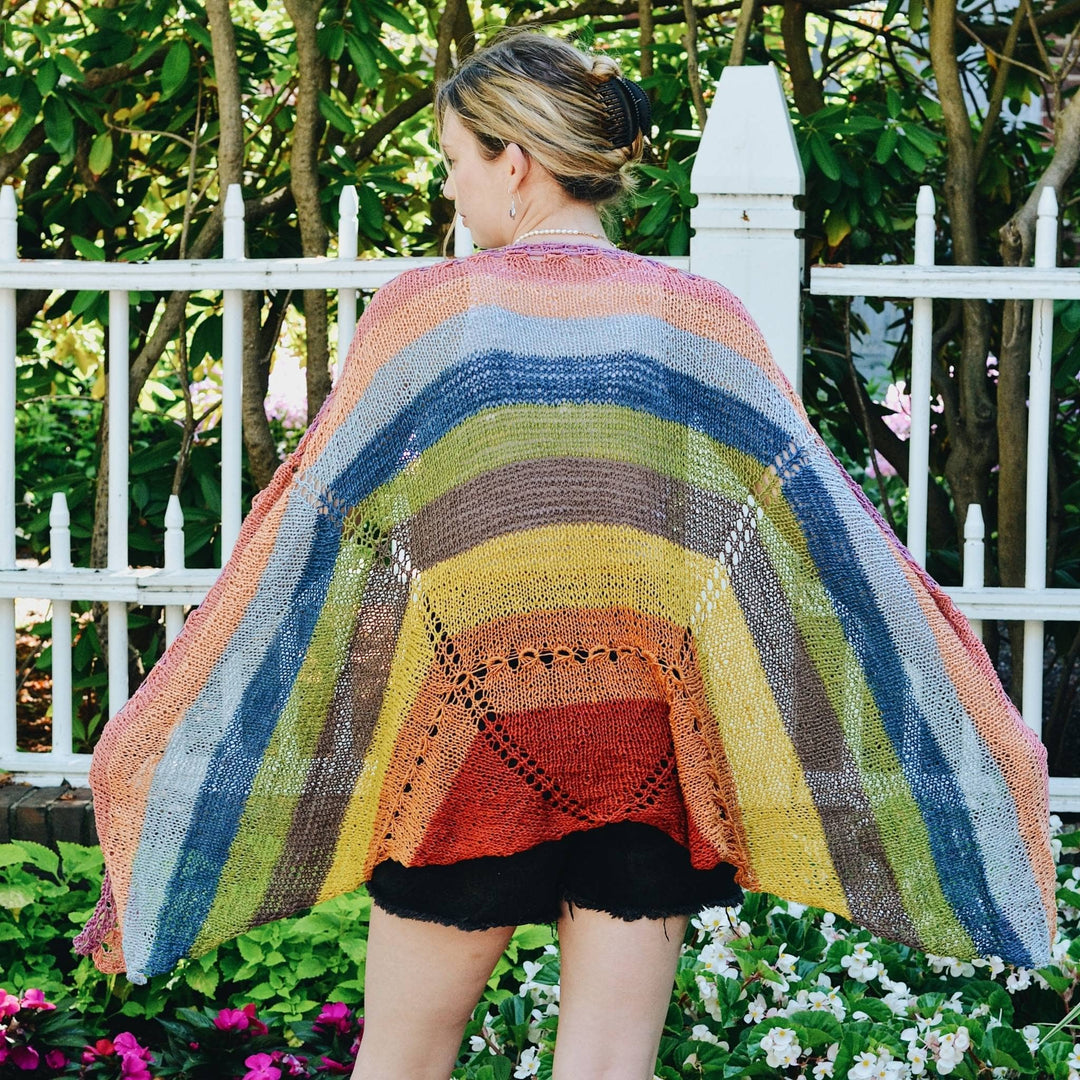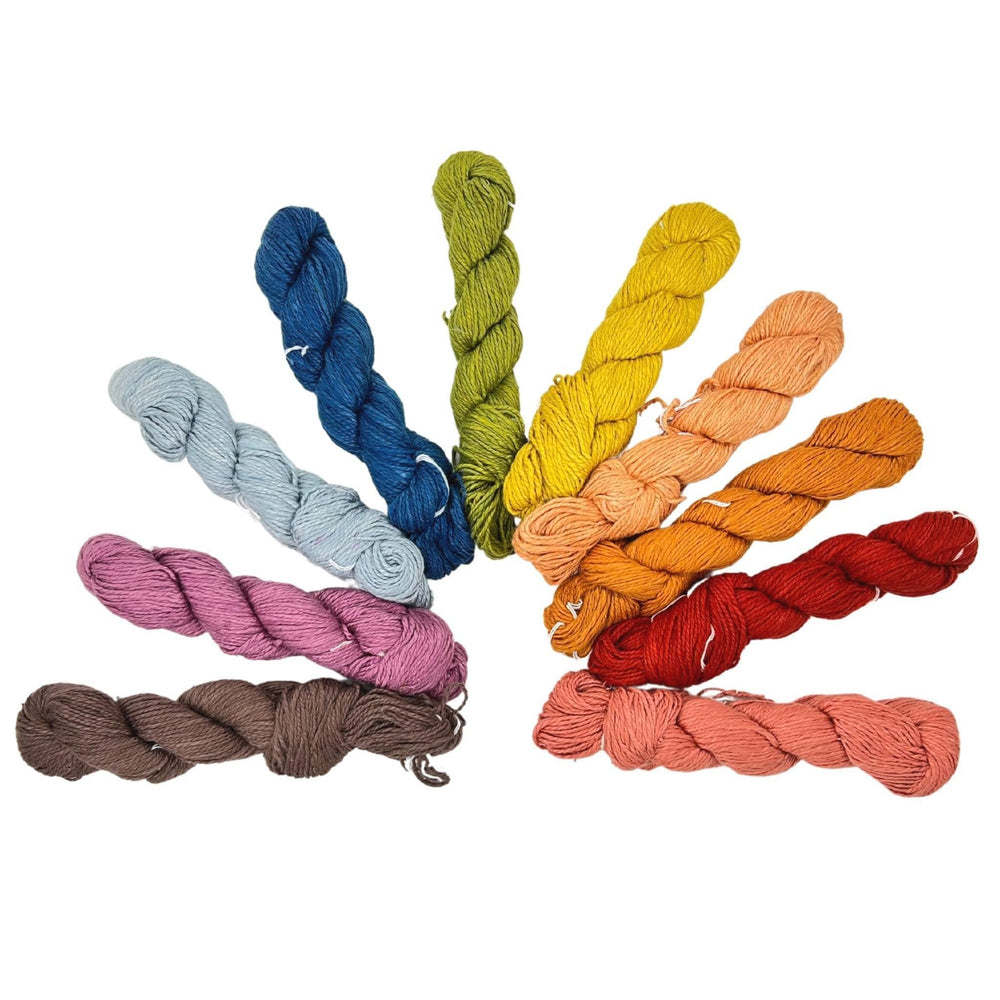Introduction
Knitters know how much passion, focus and effort goes behind knitting. It is not merely a process: it is a stellar showcasing of one’s skill, creativity and effortless handling of needles. Activities like knitting continue to be among the favorite occupations of people, particularly women around the world.
This is why it is imperative to choose the appropriate equipment and the correct choice of materials. For beginners, seasoned knitters and also those who just do it as a hobby, there is no better choice than bamboo. This particular material choice lends a satisfying organic and warm feel to the needles, making the activity even more enjoyable, wholesome and pleasing.

Why Choose Bamboo
Bamboo, being a natural material, gives a similar feel to that of wood. But what is even better is the cost-friendliness of bamboo knitting needles and the variety of sizes they’re available in. But what lends all these attributes to bamboo particularly? Let’s go back a little in history.
You see, people first discovered bamboo in Asia, when it initially started out as grass. People also found the same variety in the same form growing in parts of India too, although now bamboo growth is common in many parts of the world.
People commonly describe bamboo as a fast-spreading grass too but do you know why? The reason behind this reference is that if one plants just a little bit of bamboo, it will spread to the underground plus much of the surrounding areas as you give it access to.
While this may surely be an unpleasant trait for gardeners, others who love incorporating bamboo for a variety of products will love its spreading capacity. In addition to knitting needles, there are tons of other things people love creating with bamboo. Some examples include chopsticks, chairs, and tables, ladders, fencing pipes, decorative items and even clothes.
In fact, bamboo is also now a common material in construction activities. This is why no one hesitates from describing this beautiful natural material as a wonder. Its extreme renewability and other magical properties make it a favorite among the masses. In fact, since we’re talking about the many uses of bamboo, currently the most popular favorite one appears to be bamboo yarn.
What Goes into Bamboo Knitting-Needle Making
Bamboo grass is the main ingredient in bamboo knitting needles. Manufacturers of bamboo needles first harvest the grass and then dry it out in the sun. When they achieve the perfect form of the material, they cut it into needle-sized lengths.
The next step involves shaping the needles to their right width, then curing and sanding the needles. To give it the final finishing touch. Makers taper the end by working it with machines or their hand to achieve the pointed end.
In most typical cases, the makers of the needles go for one more sanding round to attach the other end of the needles. After gauging and checking the end products then they ship the final products to stores.

Qualities of Bamboo in Comparison to Metal Needles
So why are bamboo knitting needles particularly a favorite of knitters around the world? Like we mentioned above, the natural material of bamboo carries with it a certain warmth and an unbeatable earthy feel. It just has a satisfyingly warming and good effect in the hands of the knitters.
In addition to these attributes, the other winning qualities of bamboo include its incredible flexibility and strength. Knitting is an activity of rapid and quick movements for which it is highly imperative to use materials that have the former characteristics.
Bamboo being flexible, strong and durable does not break easily, meaning the knitters can easily accomplish years of knitting services without having to replace the needles. Beginners in the art of knitting will specifically love this material because it is not slick like its plastic and metal counterparts.
Due to this, the needles provide better grip and stay while beginners learn the art of handling long knitting needles without messing up. There’s also the possibility of yarn splitting which commonly happens with other knitting needle materials. But bamboo eliminates that possibility as well by making it easier and comfortable to use knitting needles.
The natural material makes the needles smoother and more lightweight, helping every knitter to accomplish a level of mastery where mistakes rarely ever happen.
Easy Maintenance of Bamboo Needles
The next appealing factor about bamboo needles is that they’re very easy to maintain and don’t really need a lot of care. You could simply buy a pair of bamboo knitting needles and keep them new for long with light sanding every now and then.
This one simple practice will keep your knitting tool smooth and nice while protecting the tips from splitting your yarn. Even an emery board will suffice in this regard. Hence, you can see what little to almost zero maintenance your bamboo needles need while promising years of excellent knitting services.
Cost Friendliness
Owing to the widespread popularity and demand for bamboo, you will see scores of manufacturers producing circular, double-pointed and straight needles. You only need to visit a supermarket aisle to see the plethora of options available. But here comes the best part: every bamboo knitting needle falls within a range of $5 to$10.
While the size and the manufacturer of the bamboo needles have a heavy impact on the pricing, they still fall reasonably cheap in comparison to wood and metal needles. Wooden knitting materials easily cost around $15 and upwards.
Bamboo Knitting Materials- Why They’re The Best Choice
The choice of knitting needles widely impact the level and quality of the craft. For every item you knit, the choice of needles you work with greatly influences the outcome of the end product. You can choose from a variety of knitting-needle materials these days.
The more traditional choices of material include aluminum, wood and metal. However, ever since the winning properties of bamboo have become so popular, more and more knitters are turning towards it. The primary qualities of bamboo needles include renewable material, eco-friendliness and durability.
Due to these appealing features, bamboo has even successfully overtaken the demand for wood. Bamboo is a great choice for the environment, which alone is reason enough why we must choose this specific material for most products we use.
Bamboo is also far better than metal needles in the regard that it does not produce the annoying clicking sound that the latter always produces. The clinking noise not only irritates the knitter but also those who are present in the room. It destroys the concentration while just being downright unpleasant to the ears.
Seasoned knitters reading this article will wholeheartedly agree when we say that the success of knitting depends largely on the level of concentration of the knitter. One missed stitch could ruin the final design the knitters aim for. The level of quietness that bamboo needles provide, despite the continuous contact they make with each other, helps facilitate the concentration of the knitter entirely on their craft.
Metal or plastic needles do not provide this advantage. In fact, mental and plastic needles keep causing the stitches to slide off. The good old warm feeling, the steady grip, the prevention of stitches from slipping plus the quietness all lend to a successful knitting experience each time.
Another great quality of bamboo needles is the carbonization that makes the product smooth and even smoother with the passage of time. Users will discover that as they continue using the same bamboo needles time and again for their craft, the smoothness level, the overall quality and the sturdiness keeps increasing.
Styles of Knitting Needles
Gone are the days of simplicity, where what worked for one worked for the entire family. Back in the old days, when fashion did not even exist, women used a standard size of knitting needles to create warm clothes that would protect every member of the family against the biting chill.
Now, the fashion world dominates all our closet choices and people of all ages need a style, a fit and a product that ticks all the trendy boxes. To meet all these ever-increasing demands, there is a need for complex tools even in the case of knitting.
Here are the variety of knitting needle styles you can choose from:
- Circular: The knitting craft has evolved with the passage of time. Why wouldn’t it though, since the evolving fashion trends demand there’s a new style, a level of complexity and a plethora of patterns to suit their fashion needs? Circular needles are the most versatile knitting tools to have come into existence. They serve the most complex projects of knitting and accomplish a range of sizes for products. You will see two-short pointed ends in circular needles, which varying lengths of cords typically combine. Circular needles are ideal for projects of larger scopes, such as sweaters, scarves, blankets and others that require horizontal knitting. These needles provide the knitters ample flexibility and space for stitches with the varying length of cords. Another benefit of using circular needles is that the cord spreads the weight of the project, allowing you to rest the product on your lap as you work. This helps take away much of the burden off your wrists, making the knitting quite lighter than it would be.
- Straight Needles: Straight needles are the most popular choice for knitters. You can find these in four sizes and are the best pick for knitting projects of a smaller scope. If you have no excessive bulk to work with in a project, especially one in which you intend to piece things together or sew together, then straight needles are a great choice.
- Double Pointed: Double pointed knitting needles are those that have points at both ends and are typically shorter. You will typically find them in sets of four or five and are ideal for small projects. For instance, knitting baby hats, socks and such items are best for this needle type
Natural Knitting Needles- Why They’re Better
Apart from the strength, durability and warm good feelings that natural material knitting needles give you, they’re also important for health. You see, the knitting needles one chooses can often impact unhealthy substances or toxins into the body of knitters and even wearers.
While you may or may not have noticed, it is true that most new knitters tend to use cheap aluminum or plastic needles. In fact many other experienced knitters use those commonly too. Do you know why? Perhaps it is the cheapest pricing that makes the needles the first choice for knitters.
But have you ever noted the paint chipping off quite noticeably from these needles? When knitters use such needles, the paint that keeps chipping off as they knit dissolve and seep into their skin. As a result, all the poisonous and harmful toxins they contain enter the knitter’s body.
However, natural needles like bamboo are completely free of this hazard and are also co-friendly. They do not contain any poisonous toxins that could potentially threaten the health of the crafter. Moreover, the needles are smooth and warm to the touch, lending an oddly satisfying and relaxing feeling to the knitters.

Final Thoughts
Bamboo knitting needles are the best choice for those who wish to take up this craft for life, either as an occupation or merely as a hobby. Bamboo is a natural material and thus possesses several healthy and desirable qualities. These include renewability, strength, durability, free of toxins and also safety for the health of knitters and wearers.
Bamboo knitting materials are also a great investment because they’re cost friendly compared to other materials and last well for years. It only takes a few simple maintenance practices to keep the bamboo needles smooth, new-looking, well-performing and durable for long.
Bamboo needles are also an excellent pick for knitters of all levels, regardless of whether they’re mere beginners or experienced professionals. Regardless of the scope, complexity and size of the knitting project, bamboo knitting needles are the ideal pick for all!
 Rewards
Rewards

